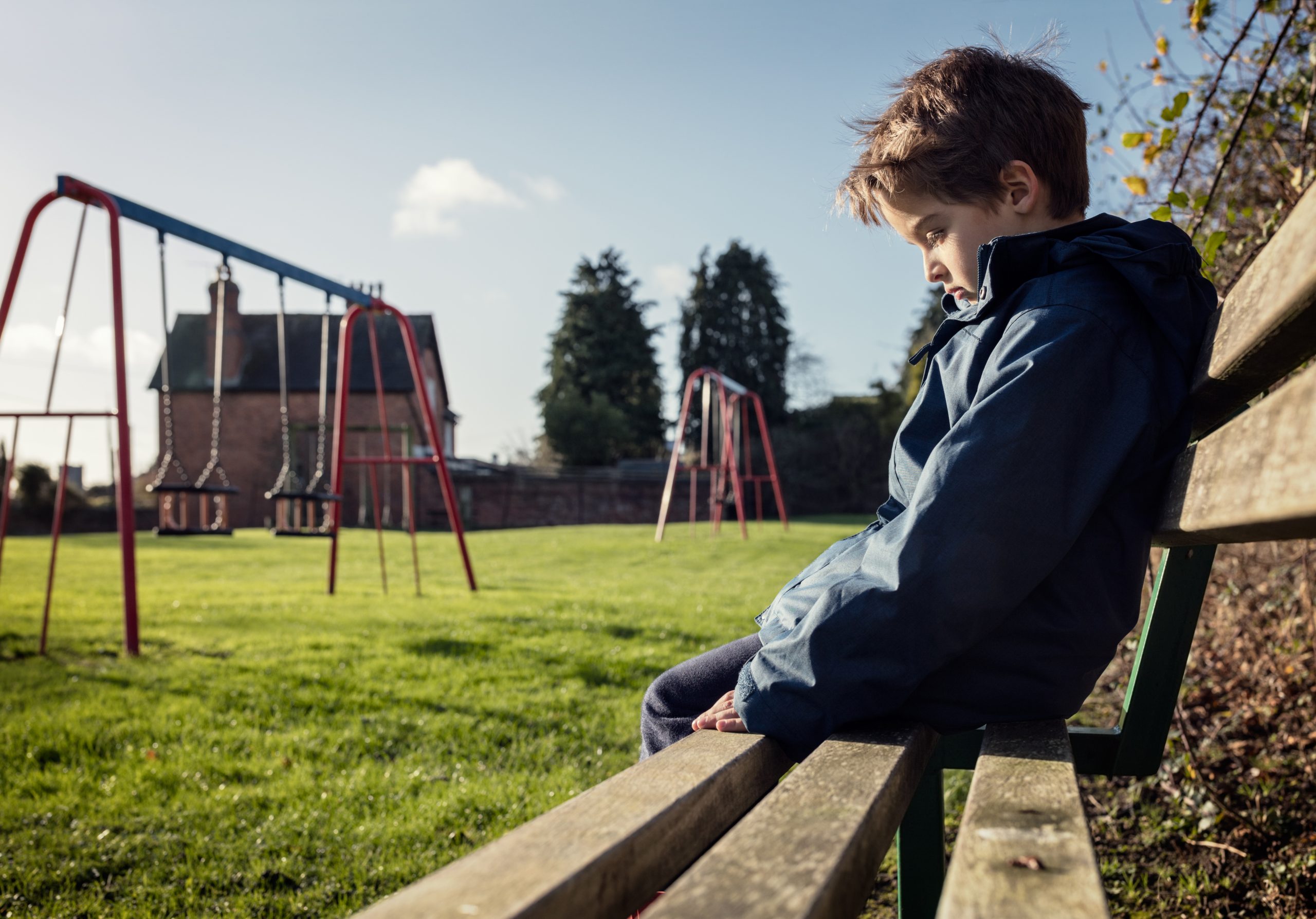Do experiences of social isolation impact the mental health of young people?
7 February 2024
How does being isolated from other young people relate to mental health problems? In this blog, Dr Katherine Thompson, a postdoctoral research associate researching statistical models to predict depression at Purdue University in the United States, discusses her PhD research on this area. This research was featured as part of the Neuroscience and Mental Health Innovation Institute‘s 2023 Waterloo Foundation Public Lecture.
With the global COVID-19 pandemic forcing people to be separated from each other, the focus on social isolation as a public health issue has substantially increased over the past few years. Social connections, and the relationships that stem from these connections, can provide support, companionship, and guidance to navigate everyday life. Research across the behavioural sciences has shown that a person’s social experiences are interlinked with their mental and physical health.
A lack, or even absence, of social connections, termed social isolation, could have a wide-reaching impact on long-term health outcomes. Many studies have looked at how socially isolated adults have an increased risk of developing mental health problems. However, this could be even more impactful for children and young people at a time where relationships play a key role in development. The latest advisory from the US Surgeon General on significant public health challenges that require immediate awareness and action announced that social isolation is an urgent priority for improving health.
My PhD work used in-depth longitudinal data to better understand the link between social isolation and mental health problems in young people. My colleagues and I at the SGDP Centre King’s College London showed that it is important to consider how social experiences can change over time, and that social isolation is not only a risk factor but could also be considered a result of mental health problems, or both.
Young people experience social isolation slightly differently to adults. As children often have parents or siblings around them, childhood social isolation can be conceptualised as the extent to which children are connected to other children. This is different to feeling lonely, as children can be lonely even when surrounded by other children. We conducted a series of key studies that assessed social isolation using data from the Environmental risk longitudinal twin study cohort (or E-Risk) of 2,232 children that were followed up from when they were 5 to 18 years old.

Social isolation throughout child development
We showed that there are groups of children that follow different trajectories of social isolation over time. By this I mean that some children started off isolated early in childhood, but then became less isolated as they went through school, and other children were not isolated early on but were more so as they got older. Most children were not isolated, and for those that were, they shifted in and out of isolation over time. Depending on which trajectory or group the children were in, this impacted their mental health differently. Rather than experiencing social isolation at any point in time leading to an increased risk for mental health problems, it was dependent on when the isolation was happening. Children were more likely to have co-occurring problems at the time they were most isolated. We emphasised the importance of recognising social isolation in children as a valuable indicator of co-occurring problems such as emotional problems and hyperactive and impulsive behaviours. By giving the right support at the right time, isolated children could benefit from support at the time they are most vulnerable to isolation to reduce the risk of long-lasting problems.
Does social isolation lead to mental health problems, or do mental health problems lead to isolation?
Social isolation has been thought of as a risk factor for poor outcomes, in the sense that experiencing isolation leads to later difficulties. It is also possible that people who are experiencing difficulties withdraw and become isolated. We investigated this question of directionality for children with attention deficit hyperactivity disorder (ADHD) symptoms in childhood. Children who were hyperactive or impulsive were more likely to experience social isolation later on. Negative interactions with peers may lead children with ADHD to become withdrawn, rejected, lonely and isolated. A focus on combating negative biases around neurodiversity in schools and local communities could help reduce experiences of social isolation for these children. Social isolation should be carefully assessed in children with ADHD and that they could benefit from interventions aimed at increasing social participation and easing social challenges. We highlight the importance in enhancing peer social support and inclusion for children with ADHD, particularly in school settings.
Our most recent work extended this to show that young people’s experiences of social isolation are developmentally intertwined with poor mental health, particularly for depression and psychotic experiences. Rather than a risk factor or an outcome of poor mental health, social isolation could be a marker of functional impairment that occurs alongside mental health symptoms. We did this by showing that depression and psychotic-like experiences have a substantial genetic overlap with social isolation. We can compare this to that of sleep problems. Mental health symptoms are longitudinally and bidirectionally associated with sleep disturbances across childhood and adolescence. Sleep disturbances are distinct from mental health problems, but they typically go hand-in-hand phenotypically and genetically. They are often treated as a peripheral or secondary symptom for mental health disorders. Sleep disturbances can both act as an indicator that a person is having difficulties, as well as subsequently worsen symptoms for people with these disorders. Social isolation and mental health symptoms could be interconnected in a similar way, and inquiring about social isolation could provide an avenue to identify young people that not only are at risk for mental health symptoms but are already experiencing difficulties that have not yet been recognised.
Further reading:
Thompson, K. N., Odgers, C. L., Bryan, B. T., Danese, A., Milne, B. J., Strange, L., … & Arseneault, L. (2022). Trajectories of childhood social isolation in a nationally representative cohort: Associations with antecedents and early adulthood outcomes. JCPP Advances, 2(2), e12073.
Thompson, K. N., Agnew-Blais, J. C., Allegrini, A. G., Bryan, B. T., Danese, A., Odgers, C. L., … & Arseneault, L. (2023). Do children with attention-deficit/hyperactivity disorder symptoms become socially isolated? Longitudinal within-person associations in a nationally representative cohort. JAACAP open, 1(1), 12-23.
Thompson, K.N., Oginni, O., Wertz, J., Danese, A., Okundi, M., Arseneault, L., & Matthews, T. (Submitted for peer review). Social isolation and poor mental health in young people: Testing genetic and environmental influences in a longitudinal cohort study. European Child & Adolescent Psychiatry.